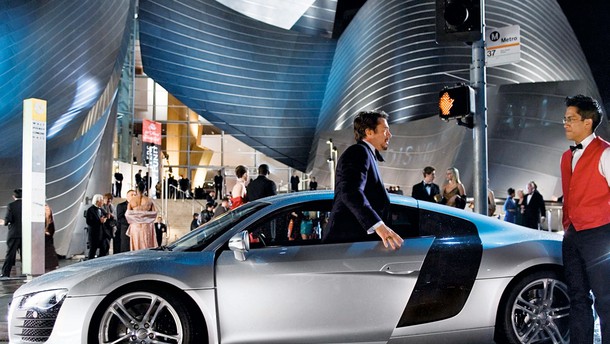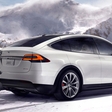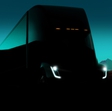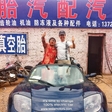
Though the human cast in stories that are portayed by the seventh art—moving images—is indispensable, we should consider one more actor that brings the lion's share of action and roaring excitement on four wheels onto the big screen. It's the car, of course.
Instead of going straight to the fastest and the most powerful, let's focus on what enthused us with its progressive green technology (though it may have come through only as special effects). While some remain only over-priced concept cars, high in demand with the wealthiest collectors of film props and replicas, others are entirely accessible. Ready to flood the streets of the real world, these vehicles have connected the present day with the promise of eco-conscious automobilism. The future has arrived.
1985: DELOREAN (Back to the future)
Those of us who have been around long enough to see the popular Sci-Fi comedy "Back to the Future" (the most profitable movie in 1985) within a year of its release date, will still recall the plutonium-guzzling DeLorean, which took and Marty (and us along with him) back to 1955. DeLorean, officially labeled as DMC-12, was not chosen only because it had received lots of media coverage, but also because of its convincingly futuristic avian doors, that made it look as if it had just flown in from another galaxy (you may remember the scene on the Peabody farm, back in 1955).
The today iconic time machine, which in the original screenplay was meant to be a fridge, was designed by Ron Cobb, Andrew Probert and Michael Scheffe, but Kevin Pike's Filmtrix studio built and fine-tuned three production vehicles for the movie. As noted by the director, Robert Zemeckis, the time machine looked as if Doc Brown had built it in his garage with whatever he had to hand, which is the reason why the crew never devised a vehicle with advanced electronics, let alone a vehicle with communication abilites, like the iconic KITT car from the "Knight Rider" television series. The original DeLorean model was constructed by DeLorean Motor Company, which launched its operation in 1981 and went bankrupt in 1982. DMC-12 was powered by a 2,8 litre V6 engine with 97kW output and the ability to accelerate from 0 to 100 km/h in less than 8 seconds.
While all the DeLorean cars used in the movie retained the original V6 engines, the roaring Porsche 928 V8 engine sound was used to boost their natural sound. The electric DeLorean in the movie had to reach 88 mph (approximately 142km/h) to activate the "flux capacitor" which required 1.21 gigawatts of electric power, before traveling to any point in time. Since such energy could only be generated by a powerful nuclear reaction (or lightning, of course), the DeLorean received a plutonium-powered nuclear reactor (made from the hubcap of a Dodge Polara). The car was, by the end of the movie, enhanced with a levitation feature, and Mr. Fusion (an alternative fuel tank made from a Krups coffee grinder), allowing the time machine to run on trash, rather than plutonium. When Mr. Michihiko Iwamoto from Japan first saw the movie as a child, he was immediately enthused by the idea of alternative fuels. As CEO of a successful Japanese company, Jeplan (recycling technologies development), Iwamoto has now, at the age of 51, decided to fulfill his lifelong dreams. In hopes of building an authentic version of the DeLorean, he teamed up with NBC Universal Entertainment Japan, and derived a version that is powered by bioethanol produced from the cotton fibers of old clothes, rathen than organic household waste. The Japanese DeLorean is expected to hit the streets of Tokyo (minus the traveling-through-time feature) on October 21 which marks the day in the blockbuster trilogy that Doc Brown, Marty McFly and his girlfriend, Jennifer Parker, chose to travel to, 30 years to the future—to 21 October 2015, the release date of our third issue of Plugin Magazine. Another interesting bit of trivia.
Did you know that the trilogy featured another vehicle which you might not have noticed, but which conceptually resonates with the efforts of present day engineering? It was a flying taxicab. called Cab B25. The cab was a Citroën DS (which was driven, or rather flown, in the movie on 21 October 2015) with the maximum ground speed of 145km/h and 274km/h in the air. It was fitted with six cylinders, and a fusion turbine accelerator under the hood. And how close are we to flying cars and alternative fuels in 2015? The first milestones have already been reached, the only thing left to do is figure out how to travel in time.

1993: GM Ultralite (Demolition man)
Some vehicles that came from the automobile corproration General Motors Company stole the limelight even from the actors in some of the biggest Hollywood hits. Among them was the GM Ultralite. Officially introduced as a fully-functional vehicle for four passengers, in 1992, the General Motors Ultralite appeared in "Demolition Man" a year later, as a futuristic concept car, an autonomous, fully-electric police vehicle from 2032. To create a convincing future automotive environment, as many as 20 Ultralites were built for the shoot. While some appeared as ordinary passenger cars, others assumed the role of official police cars.
A purring traveler, decked in shiny fiberglass bodywork, the car gave the illusion of running on electricity. But in reality, its 3 cylinder 2-stroke engine was a gasoline guzzler of 83kW, with the maximum speed of 217km/h (fast for the urban environment) and 8 seconds to accelerate from 0 to 100km/h. Weighing only 635 kilograms, Ultralite was said to traverse 100 miles on one gallon of gas (or 161 km with 3.8l). The movie rendition contained a variety of advanced cockpit technologies, including the surprisingly polite voice response control, and the possibility to switch between autonomous and hands-on driving. 17 years ahead of the events in the movie, we are ever closer to the world of self-driving cars, especially considering the recent rather notorious electric vehicle, the Google Self-Driving Car (SDC), devised and successfully tested outdoors by Google X.

2002: Lexus Concept (Minority Report)
Only in Hollywood, Stephen Spielberg (a Lexus driver and an avid fan of Lexus vehicles) approached the prestigious car manufacturer to draft a visionary outline of their Lexus, as they envision it in fifty years' time. He was stunned by their concept of luxurious dreams, fitted with a smart self-charging electric 500kW engine, a carbon fiber and titanium composite chassis, and a computer-controlled braking system. Here come a few of its many flashy features: bodywork with dent-resistant memory metal, that is able to detect and eliminate scratches, solar panel glass in the roof and retractable solar body panels for battery recharging. The car is equipped with an advanced DNA recognition system, allowing (or preventing) a driver to enter the car and fire up the engine. In the Tom Cruise movie "Minority Report," Tom drove a red sports Lexus, a fully-functional electric vehicle with a maximum speed of 113k/h. To look good on-screen and reach top velocity, the coupe was powered by an all-electric engine and 47 batteries. Set in the year 2054, the movie portrays a transportation system called MAG-LEV (vast urban magnetic levitation) which is a predictable, accident-free and computer-controlled system that is powered by electrical or magnetic energy. With rotating pods that come in place of classic wheels, a MAG-LEV vehicle uses magnetic levitation to move across horizontal and vertical surfaces at the speed of 129–161 km/h. Futuristic technologies were added in post-production. The closest approximation to the concept car from "Minority Report" is the so-called record-breaking maglev train from Japan. In April, the train set a new world speed record at 600km/h, and though it can travel almost as fast as airplanes, its infrastructure is much too pricey to make it a widespread mode of transportation.

2008: Tesla Roadster (Iron Man)
It's a well know fact that Tony Stark (played by the steadfast Robert Downey Jr.) kept many wondrous car specimens in his friendly garage. In 2008, his portfolio grew richer with a Ford Flathead Roadster, Shelby Cobra, Saleen S7, Audi R8 and an electric Tesla Roadster, which always makes our ears perk up. The first vehicle produced by the Californian company, Tesla Motors was, at the time when they were filming the first "Iron Man," only a prototype, while their production model was publically announced the same year that the movie came out.
Tesla Roadster, year 2008, was a neat sports car with a 185kW electric engine and 2-speed manual transmission. It reached 100km/h in just 4.4 seconds, while its top speed was electronically limited to 201km/h. With the electric drivetrain, the car drew electricity from large Li-Ion batteries comprised of as many as 6,831 Li-Ion cells. On a single charge that took 3 and a half hours to complete, Roadster covered between 300 and 400 kilometers. The fact that the Tesla Roadster made an appearance in "Iron Man" may not be just a coincidence (or a paid promotion). The rumor in the automotive industry has it that Tony Stark, the ingenious engineer and entrepreneur, was based on the equally brilliant engineer and entrepreneur Elon Musk, the CEO and chief-designer at Tesla Motors (and SpaceX). Moreover, what if we tell you that Musk's right-hand man is actually a woman, the president and COO of SpaceX, Ms. Gwynne Shotwell? Has this brought to mind Stark's Virginia 'Pepper' Potts, played by Gwyneth Paltrow? You bet it did, at least on our end.

2011: BMW i8 (Mission Impossible: Ghost Protocol)
All the "Mission Impossible" franchise movies burst at the seams with adrenaline-pumping action scenes that often include high-performance vehicles, which most ordinary folks will never be able to test out, let alone have in their possession. Nevertheless, these vehicles are much more than just shallow beauties turning greedy and inquisitive heads. Featuring in the third movie about secret agent Ethan Hunt is the BMW i8, an eco-friendly muscle car.
The concept model with plug-in hybrid technology is powered by a 1.5 liter 3-cylinder gasoline engine and two electric motors, with a combined output of 250kW. Its top speed is limited to 250km/h, and it takes 4.6 seconds to shoot from 0 to 100km/h. Taking less than two hours to charge, the batteries are located in the energy tunnel, which gives the vehicle a low center of gravity and, subsequently, better dynamics. High-tech buffs will probably notice a 3D holographic touch-sensitive GPS display (based on the real BMW ConnectedDrive technology) and new, absolutely charming laser headlights. Although this may seem like gilding the lily, laser technology is in many ways more advanced than LEDs. In contrast to the light-emiting-diodes, laser diodes are a hundred times smaller, more energy efficient, and a thousand times stronger. If you've missed out on it, you should certainly watch Ethan Hunt (Tom Cruise) and Jane Carter (Paula Patton) as they speed around the streets of Mumbai in their handsome, ecologically sound i8.

2013: Audi R8 e-tron (Iron Man 3)
It's no surprise that we find ourselves back in Tony Stark's garage, as the man has a lot to show. If Stark is a fictional character, then the same cannot be assumed for his top-notch Audi R8 e-tron. R8 was not the first car by Audi in Stark's fleet (recall the R8 Spyder, A8, S5 and Q7 in previous movies), but it was the first car with a 49kWh Li-Ion battery pack that offered a 214km driving range, while roaring with 280kW power output. It was able to hit a 100km/h mark in 4.6 seconds and, conveniently, it partially recharged its batteries when braking.
In June 2012, just before its appearance in "Iron Man 3," Audi's first electric car, the R8 e-tron, set the world record (8:09.099 minutes) at the infamous Nürburgring Nordschleife in Germany, which is considered the toughest track in the world. It is no wonder that such a luxury car is best suited to this Einstein-like superhero who, like the automotive industry, is subject to constant development, thanks to technological advancement and engineering feats. Recently, very few plug-in hybrids and electric vehicles have made it into the spotlight of popular movies and television series. Primarily featured as expensive extras, they can be seen (providing you have sharp eyes) parked, and therefore bored to death.
In 2014, a compact five-door electric Nissan Leaf flashed on-screen in the movie "Robocop" so quickly, that if you didn't know to look for it, you would've missed it. Viewers can (barely) catch a glimpse of it in some TV series, like "Castle," "Hawaii Five-O" and "The Office." A fully-electric Tesla Model S played a similarly inconspicuous role in the movie "Kingsman: The Secret Service" (2014), and it appeared in the background of "Fifty Shades of Grey." A plug-in hybrid Chevrolet Volt was sidelined in the film "Captain America: The Winter Soldier" (2014), while it enjoyed a few more seconds of screentime in an episode of the American series "Shameless." To date, contemporary plug-in hybrids and EVs have not earned major roles in film, but it is indisputable that our future lies hidden within their batteries. Sooner or later they will star not only on our streets, but also on the big screen




